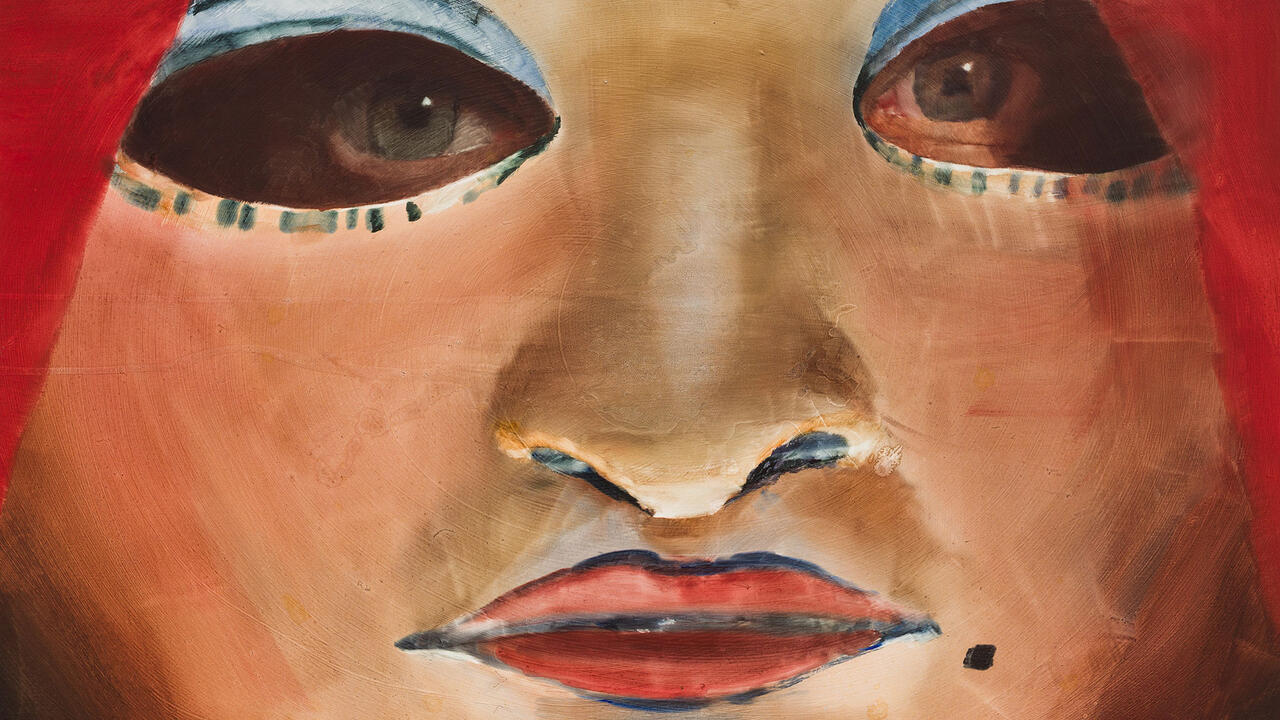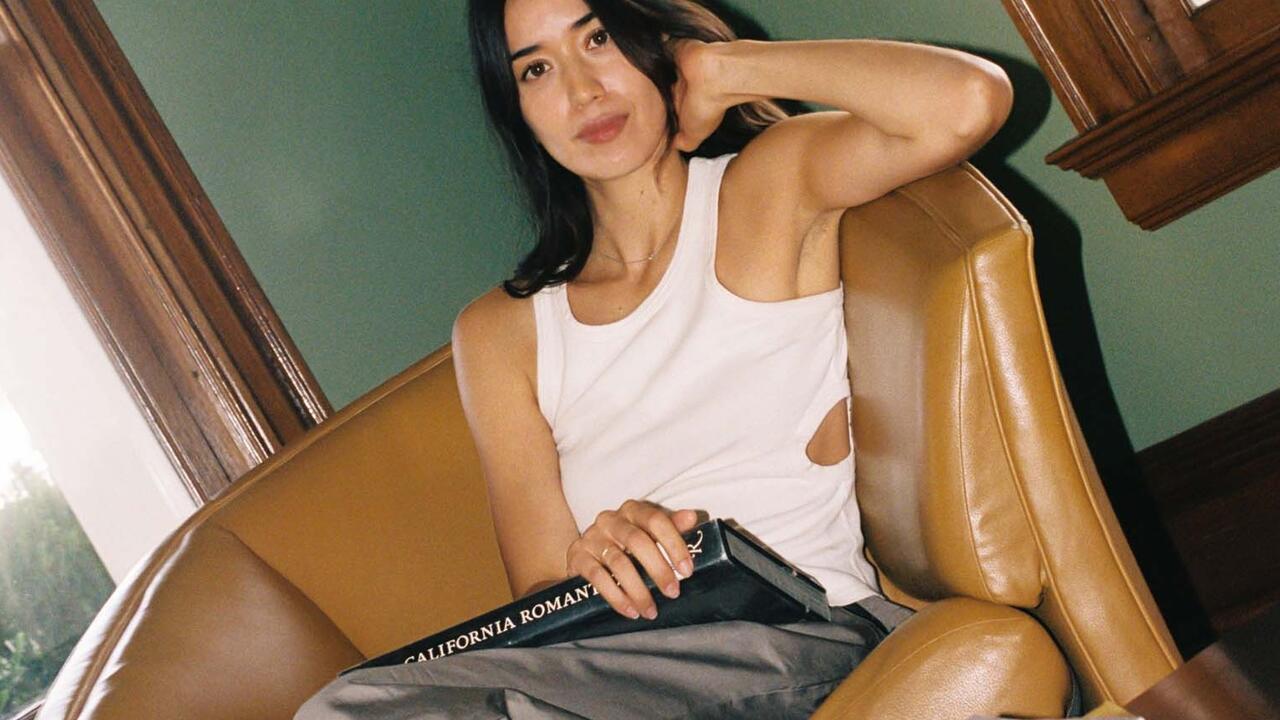Becky Beasley

After a winter that unrelentingly tore at and drowned parts of the United Kingdom with storms and floods, spring arrives like grace. The weather report at the time of writing mentions the ‘relief’ and ‘promise’ of a warm Sunday to come. But storms mark landscapes and memories, just as periods of intense emotional weather create psychic scars. In the clear up following the storm that hit southern England on St Jude’s day (28 October) 2013, Becky Beasley’s father collected nine slender twigs for his daughter. She subsequently cast these in brass and screwed them together, creating a fragile mobile, Bearings (2014), which hung from the ceiling at Laura Bartlett Gallery and spun around slowly, in an exhibition that emphasized circuitous routes and the orbiting of some mysterious absence.
Beasley’s work is regularly pitched somewhere between photography and sculpture, and she has often framed her photographs behind tinted Perspex in various shades, granting the works a certain objecthood whilst holding the images at a slight remove. In this exhibition, ‘The Walk … in green’, the artist employed a fresh green glass over various monochrome photographs of plants from her own archive (most of them over a decade old and never previously printed), which accentuated the original colour of the leafy subjects, whilst also trapping them behind a patina of time. In a sculptural accompaniment, Steppe (Cloche version) (2014), folding panels of green glass were laid on the floor to form a garden step that might also resemble a protective vitrine for seedlings. Such horticultural imagery builds on a previous touring exhibition, ‘Spring Rain’ (2013), in which works were connected by domestic gardens and sexual undertones, and included photographs of curvy cucumbers and a mobile of tiny bronze cast gherkins that cascaded from the ceiling.
It was a somewhat darker and less bawdy scene here, however. Two of the verdantly tinted images, Auxiliary Flora (1) and (2) (Passive Voice) (2013), resemble a crime scene more than anything else. Both show, from different angles, a huge pile of leafy waste that has been dumped in an urban street in front of a sinister-looking saloon car. Elsewhere in the gallery, we were motivated to look for clues in a pile of takeaway prints depicting a cluttered living room in which plants are being repotted, by scanning the newspapers on which the soil is laid or the piles of books and shopping bags that lurk at the edges of the room.
It’s fair to say that Beasley’s previous bodies of work are more immediate: indeed, they are more bodies. Sculptures in carefully chosen woods, laid on the ground, have taken on the scale and heavy pathos of coffins, yet associations here are more inaccessible. Dead male writers often provide a narrative heart to the artist’s exhibitions: Thomas Bernhard, William Faulkner, Bernard Malamud and Herman Melville have all made appearances, but in this case Robert Walser’s novella The Walk (1917), to which the title refers, seemed somewhat distant, as though he might not have been walking the space, but perhaps buried beneath it. Walser’s story describes the extremes of feeling that come in waves when walking in nature, and the relationship between writing and walking – the freedom that perambulatory experience offers as an escape from writing, which for the writer is located in a space of dark and threatening shadows. Paradoxically, beautiful words come from exactly this feared, shadowy space.
A revolving postcard rack, Flora, A Life (2013), was stocked with green-tinted images of English plants, with a date and location on the reverse accompanied by a short history of each particular species. We are invited to ‘pick’ these flowers by taking a postcard away – camellias pictured years ago in Cornwall or fairy roses shot in Mound Close, Gosport, Hampshire (an address which appears several times).
In The Walk, a lost love continually flashes into the protagonist’s mind, in memories of pretty cheeks and ‘good, pure eyes’, it was impossible not to feel that this exhibition, too, circled around past sorrow. If we pick flowers from the postcard carousel or take one of the stacked prints, then what? Who might we send them to? As with Félix González-Torres’s piled takeaway prints, the implicit question was: ‘What are you going to do with it?’ In the final passage of The Walk the narrator asks himself: ‘“Did I pick flowers to lay them upon my sorrow?” […] and the flowers fell out of my hand. I had risen up, to go home; for it was late now, and everything was dark.’ Beautiful as the flowers and postcards might be, this exhibition dramatized a moment in which they had no recipients, neither graves nor lovers (at least for now).















